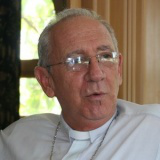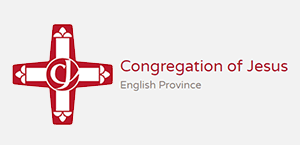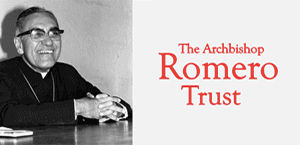Cuba: Hurricane Sandy brings more misery to island's resilient faithful

Archbishop Garcia Ibáñez
Cuba’s bishops have paid testimony to believers’ faith in the wake of Hurricane Sandy, which has destroyed churches and left people homeless. Speaking to Catholic charity Aid to the Church in Need, Archbishop Dionisio Garcia Ibáñez of Santiago de Cuba described the havoc wreaked by the tropical cyclone when it struck the island on 25 October.
He said: “We are in a dramatic situation, in the midst of devastation. Beyond the human injuries caused, tens of thousands of people have lost their homes. 85 percent of the churches in the city will have to be repaired. Three churches have been destroyed and three more no longer have a roof.”
But, Bishop Emilio Aranguren of Holguín described the solidarity his diocese had experienced from the Archdiocese of Santiago de Cuba – even though it had also suffered severe damage.
He said: “The neighbouring archdiocese has already sent a truck containing clothing, guava bars, water canisters, canned food, candles and packets of powdered milk. Other parishes had put together consignments of pyjamas as well as bed sheets and duvet covers.”
Asked what the most pressing need was at the present time, Bishop Aranguren said: “The main thing in the first few days is to set the people up again, to make it clear to them that life will go on and that they will have the chance to regain what they have lost, even if it means making major sacrifices.”
Noting the new damage to the church buildings, he said that Cuba had not yet fully recovered from the devastation caused by Hurricane Ike in September 2008.
Bishop Aranguren said: “For example, the church of Manatí has not yet been restored, and neither has that in Velasco y Bocas. And the church in Floro Pérez doesn't have a roof.”
Other churches, including those in Marcané, Frank País and Barred, which in the past have given shelter to those who lost their homes, are no longer useable due to damage from previous natural disasters or the age of the buildings.
Because of the restrictions in force in communist Cuba it had not been possible to repair them.
“In order to reconstruct these churches we need first and foremost a permit from various state authorities and at the same time support from abroad,” said Bishop Aranguren. Without this major assistance the good intentions of the parishioners concerned and their willingness to make sacrifices are not enough.”
The bishop has visited a number of places hit by the hurricane and described seeing great faith in the midst of great suffering.
“One woman told me: ‘I am one of those who hurried to the church – but not to seek shelter. I wanted to be close to her’ – and she pointed to a figure [of the Mother of God] on the facade. Neither the storm nor the strong wind could take away her crown and the stars [around her head]. “The woman then added: ‘She protects us and we feel it’.”
The Bishop of Holguín described how he sees it as his mission to shepherd his people in this time of crisis.
“After all that has happened over the past few days I have asked myself: ‘When will this suffering end?’ God the Father himself reminded me of my mission: ‘Comfort ye, comfort ye my people’, were the words of Isaiah as he set out on a new stage of life.”















